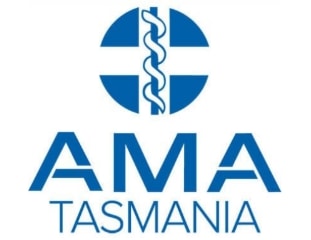Media release – Guy Barnett, Minister for Health, Mental Health and Wellbeing, 10 May 2024
Emergency Department review released
The Tasmanian Government has today released the review into Tasmania’s emergency departments and the factors affecting access and flow through public hospitals.
Minister for Health, Mental Health and Wellbeing, Guy Barnett, said the review highlighted the Tasmanian Government’s commitment to improving outcomes for patients across the State.
“This is another important marker in our commitment to improving health services across the state,” Minister Barnett said.
“The report outlines a series of recommendations aimed at improving bed usage across the health system, alongside better pathways to primary care alternatives and new solutions to enhance the effectiveness of health care.
“Our Government supports the findings, and work is already underway to implement the recommendations.
“I extend my gratitude to the panel, and particularly Professor Deb Picone, for their work throughout this review.
“As a Government, we are committed to delivering continuous and ongoing improvement across all areas of our health system to ensure Tasmanians have access to the health care they deserve.
“These measures will help improve patient flow throughout our healthcare system more easily and help us provide better healthcare and to improve outcomes for all patients.
“I welcome the recommendations and I will work closely with my Department to ensure that the recommendations are implemented in full.
“However, it is once again disappointing that the report highlights the failures of the Federal Government in addressing bed block.
“The reality is, this is an ongoing failure, and I am sick and tired of speaking about it – but we will continue to do so, because it’s what Tasmanians deserve.”
The review’s expert panel was chaired by Adjunct Professor Deborah Picone, and also included Ann Maree Keenan, RN, GAICD, Professor Tony Walker ASM and Dr Niall Small, FACEM.
These recommendations build on a set of interim recommendations delivered in December 2023, and include:
- Immediately establishing a Statewide Integrated Operations Command Centre to better manage the flow of patients and resources across the health system;
- Expansion of the Care@home program, including a model of care to support people with chronic and complex diseases;
- Introduction of secondary mental health triage officers at the Royal Hobart Hospital, Launceston General Hospital, and North West Regional Hospital;
- Expansion of the Ambulance Tasmania Community Paramedic program to support increased management of patients in the community; and
- Improved processes to manage demand across the wider hospital system.
To read the full report from the Independent Review of Tasmania’s Major Hospital Emergency Departments visit www.health.tas.gov.au.
Ella Haddad MP, Shadow Health Minister, 10 May 2024
No more time to waste on ED review recommendations
The long overdue release of the review into Tasmania’s emergency departments is further evidence that there is no more time to waste in implementing its recommendations.
The review has confirmed that hospital emergency departments are unable to keep up with existing demand, much less projected demand into the future.
Demand is growing across the health system by 30 beds a year, but only 15 beds were added during the past nine months.
It is clear that without immediate action hospital staff and patients will continue to face enormous pressure and delays in getting the health care they need, with health outcomes set to worsen as a result.
The Health Minister Guy Barnett had to be forced by Parliament to undertake this review, but despite committing to delivering an action plan by 15 December last year, Mr Barnett has only released the review today.
The Liberals cannot continue to blame the Federal Government for the health crisis while not doing everything they can to fix it – especially when eight-and-a-half out of the 10 years they have been government have been under a federal Liberal government.
The fact is that they are in State Government and they need to act without further delay.
Cecily Rosol MP, Greens Health spokesperson, 10 May 2024
ED Review Must Be Met With Urgent Action
An independent review into Tasmania’s emergency departments has outlined some of the systemic challenges facing the health system and highlights the failure of State Government to act on key issues and solutions that have been raised for years.
This report shines a spotlight on serious and ongoing issues in health, such as poor governance, an absence of leadership, cultural issues, and a lack of accountability. These are issues that unions, staff, the Greens, and others have been raising with the government for years – only to be ignored. We hope this report will finally see that change.
Given the importance of our health system, and how much of a focus it has been for the community, some of the findings of this report nearly beggar belief. How is it possible that after all this time there is still a “disconnect” managing patients who are moving through the health system? That capacity management is “poor”? That implementing recommendations is “slow?” Or that there’s “inadequate” capability to make improvements at a local level?
This report has shown the dire state of what is occurring within EDs, but it’s also exposed the fact the government has failed to properly implement much-vaunted past policy announcements. Too often we’ve seen politicians more interested in making announcements than in making a difference. That has to change.
What this review hasn’t looked at – because it wasn’t allowed to under its Terms of Reference – is the critical short-staffing in hospitals. Whether it’s in the ED, or in other wards, staffing has a huge impact on patient flow in, through, and out of hospital. Despite some election promises from the government, this remains a major issue.
All Tasmanians understand the health system is complex and that there’s no quick fix. But when mental health patients are waiting in the ED for over 10 hours on average (as this report shows), it’s clear we need to see ambitious action happening as fast as possible.
It’s good the Health Minister says he accepts this review’s recommendations, but we can’t have yet another situation where nothing actually changes. To make sure this work is done properly we need the Minister to make this a central focus. He also needs to make the investment that’s needed to recruit and retain the staff who will play such an essential role in making positive change.
Media release – AMA Tasmania, 10 May 2024
SHORT- AND LONG-TERM HEALTHCARE REFORM NEEDED
Quotes can be attributed to Dr Michael Lumsden Steel, spokesperson AMA Tasmania
AMA Tasmania welcomes the release of the report into the State Hospitals Emergency Departments and issues affecting patient flow throughout the health system, which is evidenced through ambulance ramping and patients waiting too long in our emergency departments before being admitted or sent home after treatment.
The AMA met regularly with the primary author of the review Ms Deb Picone to be updated on progress, however, today is the first time we have seen the final report.
While acknowledging the government’s efforts to engage with stakeholders and showing a clear understanding of the significant challenges facing emergency departments, Dr Michael Lumsden Steel added,
“Ask any emergency department doctor about their biggest frustration, and they will tell you it is getting patients admitted into an in-patient bed. Ask any hospital physician, and they will tell you it’s not having appropriate sub-acute care beds to move patients into to free up acute beds for the unwell stuck in emergency departments. The human toll of bed blocks is a daily reality they grapple with.
“Frustratingly, nearly 10% of the total statewide hospital acute bed capacity is occupied by patients needing aged care or NDIS services without appropriate placement options. That’s 148 beds that could be freed up tomorrow if there was the appropriate place to move these patients.
“To alleviate the strain on hospital bed capacity, immediate steps must be taken to increase nursing and medical support to residential aged care services, improve NDIS services, and establish integrated primary health care services for individuals with chronic and complex physical and mental health conditions.
“The government needs to focus significantly on subacute and frailty care, including bringing forward the building of a new subacute facility at St John’s Park.
“The urgency of freeing up beds cannot be overstated. Many of these sub-acute patients could be stepped down into temporary care facilities while building of a new facility takes place.
“We note that issues surrounding aged care and NDIS, from workforce shortages to financial sustainability, are issues primarily for the federal government, but the state can help too in various ways. What we don’t want is more finger pointing and inaction.
“Where the review has fallen short is overlooking areas of critical shortage of various types of beds and services in Tasmania. For example, while the report acknowledges the importance of expanding the Hospital in the Home or GEM@home programs, (we need at least 100 more spots), it failed to address the implementation of specialised geriatric care in the hospital, a significant oversight given that Tasmania has the highest population of older people in Australia.”
AMA Tasmania has put forth a comprehensive plan for subacute and low acuity care implementation. This includes the use of supplemented bed in Medi-hotel environments with recruitment and retention of appropriate staffing, utilisation of community hospitals’ subacute beds, and support for patients in their homes by other community health providers.
The review fails to highlight the critical role of all staff in managing patient flow within our healthcare system while also exposing deficiencies in several key areas. These shortcomings include inadequate capacity to manage tests, results, and patient reviews, as well as insufficient staffing across key hospital departments across the state. We cannot afford to focus on flow management and staff governance without emphasising operational aspects to ensure effective and efficient healthcare delivery.
“Expanding the scope of practice of other healthcare providers is not the panacea. AMA Tasmania must be involved in any decisions about changes to clinical care provided by other healthcare providers and not doctors. Doctors are highly trained and cannot be substituted by other healthcare providers without increased patient risk. However, where key integrated areas of delivering healthcare in Tasmania work together for instance Ambulance Tasmania identifying areas where there might be safer and more efficient ways to deliver care to Tasmanians are welcomed. “
Record-long wait times for planned surgeries and ongoing challenges in emergency departments underscore the urgent need for action. Access and affordability issues in primary care further exacerbate the situation, with the recent announcement of several key general practices across the state closing or amalgamating adding to the pressure, requiring an improved model of better employment conditions for general practice trainees, funding rebates for patients and improved workforce planning.
The AMA renews our call to the state government to collaborate with the commonwealth to expedite necessary reforms and allocate resources, identify the funding gap, and agree on a plan to fix it. We need to shine the light on where the deficiency is and come up with a plan as to how we can fund those deficiencies. This is crucial to ensure the delivery of high-quality and accessible healthcare services to all Tasmanians. The complexity of our healthcare system’s challenges necessitates more robust measures.
“The only way to fix our emergency departments is to address health system capacity and patient flow through honest collaboration, innovation, and investment to meet current and projected demands.”
Media release – Australian Medical Association, 10 May 2024
Health system needs urgent investment now to tackle immediate concerns
With the federal budget just days away, the Australian Medical Association is calling on the government to ensure investments in the health system to date are not the “be all and end all” ― with a still struggling health system needing urgent attention.
AMA President Professor Steve Robson said the federal government’s investments in primary care announced in last year’s budget; and reforms to the public hospital funding agreement, with additional funding to come next year, were very welcome.
“But just weeks ago we released our Public Hospital Report Card which showed planned surgery wait times in our public hospitals are now the longest on record, and emergency departments remain strangled by access block,” Professor Robson said.
“While those upcoming reforms and additional investment in hospital funding are welcome the new agreement won’t come into effect until next year. We need action now in the form of an investment of $4.12 billion to address the planned surgery backlog, to be split between the commonwealth and the states and territories.
“We’ve also still got access and affordability issues in primary care, and it is critical that the momentum for reform and investment in general practice that was started in last year’s budget is not lost.”
Professor Robson said better employment conditions are needed for general practice trainees to secure the future of general practice, and an independent planning agency to ensure the health workforce is where it needs to be.
“If we want to continue to deliver high class general practice care and excellent patient outcomes, we need to improve access to general practice by encouraging more doctors to become general practitioners,” he said.
“We are calling on the government to ensure GP trainees are offered equitable employment conditions in comparison to their hospital counterparts. We also need better workforce planning to address access to healthcare, which remains a challenge due to the maldistribution and shortages of healthcare professionals.
“Health workforce planning in Australia has languished since the abolition of the former Health Workforce Australia in 2014 and we have not seen any modelling or planning reports since 2017. The results of this neglect are becoming more apparent every day.”
The AMA’s budget submission proposes a $1 billion commitment to create an independent National Health Workforce Planning Agency.
Professor Robson said the government also had the opportunity to raise around $1 billion a year through a sugar tax, money that could be invested in tackling Australia’s incredibly high rates of chronic disease.
“This is a win-win policy with an approximate 20 per cent health levy on sugary drinks raising around $1 billion each year ― money that could be invested into preventive health measures that reduce pressure on our stretched health system,” he said.
“Research also shows there could be 4,400 fewer cases of heart disease, 16,000 fewer cases of type 2 diabetes, and 1,100 fewer strokes over 25 years if the government takes this step.”
Attention also needs to be given to the private health system, with value for money a critical issue for patients and a lack of an independent body to provide a whole-of-system overview, Professor Robson said.
“Patients are being hit with rising private health insurance bills as their providers funnel significantly more money into management expenses, dwarfing any spending increase on rebates and benefits,” he said.
“Private health is a major part of Australia’s world-leading health system, and we understand the need for insurers to be profitable, but these numbers show something has gone very wrong and that significant reform is needed.
“That is why, for many years, the AMA has been calling on the federal government to mandate private health insurers return a minimum 90 per cent, on average, of premium dollars paid each year back to the consumer in the form of rebates and benefits.
“We also need an independent body that has the capacity, objectivity, and expertise to ensure the system is fair for patients and balances everyone’s interests.”
Read the AMA’s budget submissions.




































